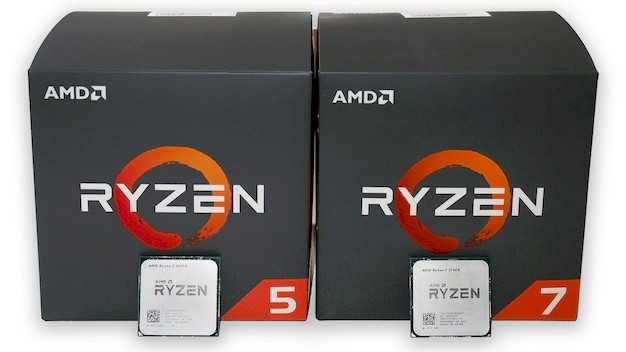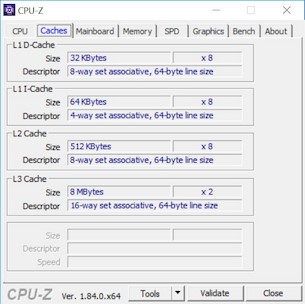AMD 2nd Gen Ryzen Review: 2700X And 2600X Deliver More Performance Per Dollar
Ryzen 7 2700X And Ryzen 5 2600X Deliver Solid Gains Over AMD's Previous Generation
AMD initially announced its 2nd Generation Ryzen desktop processors back at CES earlier this year. Our coverage of the event is available for you here, but to quickly recap, 2nd Generation Ryzen processors are based on a refined update to the Zen architecture, dubbed Zen+, that offers higher clocks, lower latencies, and a more intelligent Precision Boost 2 algorithm that improves performance, system responsiveness, and power efficiency characteristics. The chips are also manufactured using a more advanced process, however, they still leverage the existing AM4 infrastructure and are compatible with the same socket, chipsets, and motherboards as the first generation products -- with a BIOS / UEFI update, of course. That said, there is a “new” chipset arriving alongside the 2nd Generation Ryzen desktop processors as well, the X470.
There are four new processors being released today in the 2nd Generation Ryzen family, which we’ll talk about in just a moment. We’ve got the two “X”-branded variants on hand for testing, the flagship Ryzen 7 2700X and its little brother, the Ryzen 5 2600X. At their core all of AMD’s 2nd Generation Ryzen desktop processors are similar, and differ only in their core counts, frequencies, and TDPs. Foundationally, they're also quite similar to the original, first-gen Ryzen desktop processors, but as you’ll see in a just a bit, the handful of incremental updates made with Zen+, along with AMD's positioning, culminate into one heck of an exciting processor family...
As we mentioned, there are four processors arriving today, the Ryzen 7 2700X, the Ryzen 7 2700, the Ryzen 5 2600X, and the Ryzen 5 2600. The Ryzen 7 processors are 8 core / 16 thread machines, with 20MB of total cache (L2 + L3), with base frequencies starting at 3.2GHz – 3.7GHz and topping out at 4.1GHz to 4.3GHz. The two Ryzen 7s also have different TDPs and include different coolers. The top-end 2700X has a TDP of 105W (10W higher than the originals), while the standard 2700 is only a 65W processor. The Ryzen 7 2700X also includes AMD’s latest Wraith Prism cooler, with RGB lighting, whereas the 2700 includes the older Wraith Spire.
Ryzen 5 2600X and Ryzen 5 2600 processors have similar feature sets. They are both 6-core / 12-thread processors, with 19MB of total cache, but their frequencies, TDPs, and included coolers are different as well, as outlined in the table above.
From the outside, 2nd Generation Ryzen desktop processors look just like their predecessors. They use the same AM4 socket and coolers and their heat-spreaders are unchanged – except for the actual branding etched into their surface. From the top and bottom, there’s not much to see that’ll appear any different than last year’s Ryzen processors. The packaging is similar and if you’ve got a lot of time on your hands, you’ll count the same 1,331 pins on the underside.
If you check out the CPU-Z details for the new Ryzen 7 2700X and Ryzen 7 2600X, you’ll see that the chips are code named “Pinnacle Ridge” and they’re the first stepping in revision ZP-B1. Original Ryzen processors were stepping 2, revision B2. In terms of their configurations (disregarding frequencies) not much changes though. The processors have up to 256K of L1 data cache (32K per core), up to 512K of L1 instruction cache (64K per core), up to 4MB of L2 cache (512K per core), and up to 16MB of shared L3 cache. The die size the processor is 213mm2 and it is comprised of approximately ~4.8 billion transistors. Like all other modern processors, frequencies and voltages scale up and down dynamically based on the given workload, hence the funky clocks and voltages in the above screenshots.
In terms of their architecture and feature set, AMD’s 2nd Generation Ryzen processors don’t stray too far from the originals either. SenseMI, Pure Power, and XFR are all here, interwoven by AMD’s Inifinity Fabric. We won’t cover all of those technologies again since we've already done so in the past – so check out our original coverage for those details.
There is some new stuff to cover though, so let’s get to it...
There are four new processors being released today in the 2nd Generation Ryzen family, which we’ll talk about in just a moment. We’ve got the two “X”-branded variants on hand for testing, the flagship Ryzen 7 2700X and its little brother, the Ryzen 5 2600X. At their core all of AMD’s 2nd Generation Ryzen desktop processors are similar, and differ only in their core counts, frequencies, and TDPs. Foundationally, they're also quite similar to the original, first-gen Ryzen desktop processors, but as you’ll see in a just a bit, the handful of incremental updates made with Zen+, along with AMD's positioning, culminate into one heck of an exciting processor family...
|
| Cores | Threads | Frequencies (Boost / Base GHz) |
Smart Prefetch Cache |
TDP | Included Cooler |
|
| Ryzen 7 2700X | 8 | 16 | 4.3/3.7 | 20MB | 105W | Wraith Prism (LED) |
| Ryzen 7 2700 | 8 | 16 | 4.1/3.2 | 20MB | 65W | Wraith Spire (LED) |
| Ryzen 5 2600X | 6 | 12 | 4.2/3.6 | 19MB | 95W | Wraith Spire |
| Ryzen 5 2600 | 6 | 12 | 3.9/3.4 | 19MB | 65W | Wraith Stealth |
As we mentioned, there are four processors arriving today, the Ryzen 7 2700X, the Ryzen 7 2700, the Ryzen 5 2600X, and the Ryzen 5 2600. The Ryzen 7 processors are 8 core / 16 thread machines, with 20MB of total cache (L2 + L3), with base frequencies starting at 3.2GHz – 3.7GHz and topping out at 4.1GHz to 4.3GHz. The two Ryzen 7s also have different TDPs and include different coolers. The top-end 2700X has a TDP of 105W (10W higher than the originals), while the standard 2700 is only a 65W processor. The Ryzen 7 2700X also includes AMD’s latest Wraith Prism cooler, with RGB lighting, whereas the 2700 includes the older Wraith Spire.
Ryzen 5 2600X and Ryzen 5 2600 processors have similar feature sets. They are both 6-core / 12-thread processors, with 19MB of total cache, but their frequencies, TDPs, and included coolers are different as well, as outlined in the table above.
From the outside, 2nd Generation Ryzen desktop processors look just like their predecessors. They use the same AM4 socket and coolers and their heat-spreaders are unchanged – except for the actual branding etched into their surface. From the top and bottom, there’s not much to see that’ll appear any different than last year’s Ryzen processors. The packaging is similar and if you’ve got a lot of time on your hands, you’ll count the same 1,331 pins on the underside.
If you check out the CPU-Z details for the new Ryzen 7 2700X and Ryzen 7 2600X, you’ll see that the chips are code named “Pinnacle Ridge” and they’re the first stepping in revision ZP-B1. Original Ryzen processors were stepping 2, revision B2. In terms of their configurations (disregarding frequencies) not much changes though. The processors have up to 256K of L1 data cache (32K per core), up to 512K of L1 instruction cache (64K per core), up to 4MB of L2 cache (512K per core), and up to 16MB of shared L3 cache. The die size the processor is 213mm2 and it is comprised of approximately ~4.8 billion transistors. Like all other modern processors, frequencies and voltages scale up and down dynamically based on the given workload, hence the funky clocks and voltages in the above screenshots.
In terms of their architecture and feature set, AMD’s 2nd Generation Ryzen processors don’t stray too far from the originals either. SenseMI, Pure Power, and XFR are all here, interwoven by AMD’s Inifinity Fabric. We won’t cover all of those technologies again since we've already done so in the past – so check out our original coverage for those details.
There is some new stuff to cover though, so let’s get to it...











